Naturopathic Guide
Naturopathy
The term naturopathy originates from the Greek root for suffering (“pathos”) and the Latin root for birth (“natura”) and suggests “natural healing.” Figure 1. Naturopathy is a form of healthcare that combines modern treatment with traditional methods. It includes alternative, natural therapies to modern medicine [1].
Figure 1: Nature and Naturopathy
Naturopathic medicine is a system that uses natural remedies to help the body heal itself. It embraces many therapies, including herbs, massage, acupuncture, exercise, and nutritional counseling. Naturopathy was brought to the United States from Germany in the 1800s, but some of its treatments are centuries old. Today, it combines traditional treatments with some aspects of modern science [2].
Naturopathic physicians are trained to diagnose, treat and manage acute and chronic conditions. Rather than focusing on a collection of individual symptoms, a naturopath looks at a person as a whole body, mind and spirit [3]. Naturopathy is one among the various systems of traditional health care available in India. This is also called the science of healthy living. The naturopathy system of healing is based on the philosophy of natural healing with its own concepts of health, disease, and management. Naturopathy lays equal importance on both preventive and curative aspects of health care. Moreover, naturopathic protocols are easy to follow and can be integrated well into your daily routine. This is one of the reasons that Naturopathy is becoming popular globally [4].

History
Hippocrates and Thomas Allinson
The term "naturopathy" originates from "natura" (Latin root for birth) and "pathos" (the Greek root for suffering) to suggest "natural healing".[5] Naturopaths claim the ancient Greek "Father of Medicine", Hippocrates, was the first advocate of naturopathic medicine, before the term existed.[6] Naturopathy has its roots in the 19th-century Natural Cure movement of Europe. In Scotland, Thomas Allinson started advocating his "Hygienic Medicine" in the 1880s, promoting a natural diet and exercise with avoidance of tobacco and overwork. [7] Figure 2, 3


John Scheel and Benedict Lust
The term naturopathy was coined in 1895 by John Scheel, and purchased by Benedict Lust, whom naturopaths consider to be the "Father of U.S. Naturopathy”. Lust had been schooled in hydrotherapy and other natural health practices in Germany by Father Kneipp, he sent Lust to the United States to spread his drugless methods.[8] Lust defined naturopathy as a broad discipline rather than a particular method, and included such techniques as hydrotherapy, herbal medicine, and homeopathy, as well as eliminating overeating, tea, coffee, and alcohol.[9]
According to the Merriam-Webster Dictionary, the first known use of "naturopathy" in print is from 1901.From 1901; Lust founded the American School of Naturopathy in New York. In 1902, the original North American Kneipp Societies were discontinued and renamed "Naturopathic Societies". In September 1919, the Naturopathic Society of America was dissolved, and Benedict Lust founded the American Naturopathic Association to supplant it. [10] Naturopaths became licensed under naturopathic or drugless practitioner laws in 25 states in the first three decades of the twentieth century. Naturopathy was adopted by many chiropractors, and several schools offered both Doctor of Naturopathy (ND) and Doctor of Chiropractic (DC) degrees. Estimates of the number of naturopathic schools active in the United States during this period vary from about one to two dozen. [11] Figure 4 and 5
Flexner Report
After a period of rapid growth, naturopathy went into decline for several decades after the 1930s. In 1910, the Advancement for Teaching published the Flexner Report, which criticized many aspects of medical education, especially the quality and lack of scientific rigor. The advent of penicillin and other "miracle drugs" and the consequent popularity of modern medicine also contributed to naturopathy's decline. [10]
Holistic Health Movement
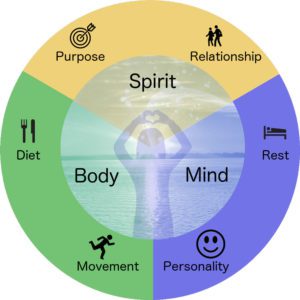
Beginning in the 1970s, there was a revival of interest in the United States and Canada, in conjunction with the "holistic health" movement.[11] Figure 6. As of 2009, fifteen U.S. states, Puerto Rico, the US Virgin Islands, and the District of Columbia licensed naturopathic doctors,[13] and the State of Washington requires insurance companies to offer reimbursement for services provided by naturopathic physicians.[14] On the other hand, some states such as South Carolina and Tennessee prohibit the practice of naturopathy.[15]
The United States IHS (Indian Health Service) began accepting naturopathic doctors in their clinics and practice in 2013, also making loan repayment available to ND's. In 2015, a former naturopathic doctor, Britt Marie Hermes, began writing critically about her experience being trained in and practicing naturopathic medicine. Her blog garnered a large following among skeptics while enraging some proponents of alternative medicine. [16, 17]
After the 1930s
It was during the 1920s and up to 1937 that Naturopathy was at its height. Naturopaths such as Lindlahr, Lust, Kellogg and Carroll were spreading the word of Nature Cure and Naturopathy and having huge success in their sanatoriums in curing people of many aliments. The research of Tilden, McDonagh and Bechamp verified the underlying principles of naturopathy, and many journals and books were written for the public to educate them into taking responsibility for their own health. The naturopathic journals of the 1920’s and 1930 provided a lot of valuable insight into the prevention of disease and the promotion of health. Dietary advice focused on correcting poor eating habits, increasing the amount of fibre in the diet and reducing red meat. [18]
In the 1940s and 1950s, a broadening in scope of practice laws led many chiropractic schools to drop their ND degrees, though many chiropractors continued to practice naturopathy. From 1940 to 1963, the American Medical Association campaigned against heterodox medical systems. By 1958, practice of naturopathy was licensed in only five states. [11]
In 1968, the United States Department of Health, Education, and Welfare issued a report on naturopathy concluding that naturopathy was not grounded in medical science and that naturopathic education was inadequate to prepare graduates to make appropriate diagnosis and provide treatment; the report recommends against expanding Medicare coverage to include naturopathic treatments. In 1977 an Australian committee of inquiry reached similar conclusions; it did not recommend licensure for naturopaths. [12]
Naturopathic Doctor and Natural Medicine
A naturopathic doctor (ND) is a healthcare professional who practices naturopathic medicine.
Naturopathic medicine is an alternative medicine approach that emphasizes using natural medicine and a “whole person” approach to prevent, diagnose, and treat health conditions.
Naturopathic Medicine
In 2011, the House of Delegates of the American Association of Naturopathic Physicians (AANP) approved this definition of naturopathic medicine:
“Naturopathic medicine is a distinct primary [healthcare] profession, emphasizing prevention, treatment, and optimal health through the use of therapeutic methods and substances that encourage individuals’ inherent self-healing process. The practice of naturopathic medicine includes modern and traditional, scientific, and empirical methods.”[19] Figure 7.


Naturopathic Techniques
Naturopathic techniques or medicines are driven by the mantra of following the curative power of nature. Naturopathic practitioners believe in natural and home remedies to restore the body of its inherent balance. These practitioners concentrate on the causes that brought about the imbalance rather than focusing on the external symptoms that come about as a manifestation of the imbalance. Naturopathy understands that disregarding the underlying causes can prove to be extremely harmful for the body and its mechanisms. Naturopathic techniques also sport the uniqueness of having no side effects and are extremely beneficial for the body. These techniques do not eclipse the symptoms that show but remove the underlying cause to a massive extent. The important thing to remember here is that naturopathic techniques focus its remedy on a specific part or portion of the victim’s body instead of treating the entire patient. In addition to this it is also important to remember that naturopathic techniques maximize prevention of further outbreaks of the disease by ensuring that the patient receives a complete alteration of his or her lifestyle and habits. They do so by refurbishing almost entirely dietary charts and drafting a common course of action that inculcates healthy practices like exercise, meditation, and exposure to clean water and sunlight. [20] Figure 8.
Goals of Naturopathy
The ultimate goal of naturopathic care is restoring balance in the body to support its natural healing process.
At its core, naturopathic medicine is distinguished by six underlying principles:

1.
First, Do No Harm:
Use the most natural, least invasive and least toxic therapies.
2.
The Healing Power of Nature:
Trust in the body's inherent wisdom to heal itself.
3.
Identify and Treat the Causes:
Look beyond the symptoms to the underlying cause.
4.
Doctor as Teacher:
Educate patients about the steps to achieving and maintaining health.
5.
Treat the Whole Person:
View the body as an integrated whole in all its physical and spiritual dimensions.
6.
Prevention:
Focus on overall health, wellness and disease prevention. [8] Figure 9.
Principles of Naturopathic Medicine:
Healing Power of Nature
It is a known fact that any living being on this planet is capable of healing. The healing process starts as soon as a individual suffers from a illness or an injury. Human cells are capable of regenerating themselves to heal and rejuvenate from time to time. Hence, the task of the physician or any medical practitioner is to aid in that natural healing process of human beings.
Health workers as Teachers
This principle emphasizes on the importance of making the patient or any individual aware about their health conditions. This is the task of the health worker to educate them so that they are able to make appropriate decisions regarding their health. [21]
Prevention and Wellness
According to this principle of naturopathy it is emphasized that any health condition must be prevented rather than being cured after getting affected by it. Hence it is advisable that overall wellness should be kept in mind and prevention should be the first step towards healthy life. One should not wait for the disease to get worse rather take preventive measures beforehand to tackle the problem.[22]
Treat the Cause
This principle states that in order to cure any disease completely and in less amount of time, the root cause should be known in the first place. Simply by reducing the symptoms one cannot cure the disease completely. Hence, the cause must be identified and cured as soon as possible.
Treat the Whole Person
According to this principle, the naturopathic treatment considers the treatment of one disease as the treatment of the entire body of an individual. Since one single disease somehow affects other organs of the body as well, therefore the overall wellbeing and treatment of the individual is of utmost importance. [23]
What Does Naturopathic Care Involve?
Naturopathic physicians use a blend of traditional treatment methods (such as performing minor surgery and ordering labs or x-rays) and holistic therapies (such as leveraging botanical medicine) to manage a broad range of health conditions.
Many of the therapies they rely on support the body’s intrinsic self-repair mechanisms. Rather than simply treating a patient’s symptoms through naturopathic remedies then sending them on their way, they look for underlying imbalances and the root causes of ailments. Then they are able to determine what is truly necessary to support and re-balance the body’s natural healing process. Healing methods for naturopathic doctors can include nutrition counseling, botanical medicine, homeopathic treatment, hydrotherapy and minor surgery. [35]
Naturopathic Approaches
Following are some of approaches that can be used under naturopathic treatments
Dietary Advice
Following a properly balanced diet are an efficient way of keeping one’s body and mind healthy. There are many diseases that result due to a lack of proper diet in the body. Hence it must be kept in mind that in order to have a healthy body there should be the intake of an adequate amount of healthy diet suitable for each individual depending upon the age, weight, or any health complications. [24]
Herbal Remedies
Another way of approaching a healthy body or curing a disease is through herbal remedies. For many years traditional medical practitioners used medicinal herbs as a source for treating various major and minor diseases like cold and cough, tuberculosis, diarrhea, etc.
Hydrotherapy
The human body consists of 70% of water. This means that water plays a significant role in the overall health and wellbeing of an individual. Water is said to have many properties which used effectively is capable in curing various diseases of the human body. [25] Figure 10.


Iridology
Iridology is the approach through which the iris of the human eye is analyzed to identify any illness or disease present in the body. It is believed that by studying the iris of an individual the medical practitioners can identify many diseases that might be present in the human body. Figure 11.
Massage
Massage is an effective approach of naturopathy that helps in curing various health related issues like joint pain, sprain, headache etc. massaging any part of the body increases the flow of blood in that region thereby reducing stress of the nervous system. [26] Figure 12.

Nutritional Supplements
Majority of diseases that are found in human body are due to the deficiency of one or more vitamin or protein etc. hence adequate amount of nutrition are essential for maintain a healthy mind and body. In case of unavailability of these nutrients in natural form, their supplements are also recommended by the medical practitioners that are easier to consume and are more accessible in today’s time.

Osteopathy
It is a manual therapy that involves bones, muscles and tissues to cure diseases by simply manipulating the musculoskeletal framework. This approach is a drug-free approach a focus on the external treatment of the health problems like back pain etc. [27] Figure 13
Methods
Naturopaths are often opposed to mainstream medicine and take antivaccinationist stance.
The particular modalities used by a naturopath vary with training and scope of practice. These may include herbalism, homeopathy, acupuncture, natural cures, physical medicine, applied kinesiology, colonic enemas,[28][29] chelation therapy, color therapy, cranial osteopathy, hair analysis, iridology, live blood analysis, ozone therapy,[30] psychotherapy, public health measures , reflexology, rolfing, massage therapy, and traditional Chinese medicine. Figure 14

Nature cures include a range of therapies based on exposure to natural elements such as sunshine, fresh air, or heat or cold, as well as nutrition advice such as following a vegetarian and whole food, fasting, or abstention from alcohol and sugar. Physical medicine includes naturopathic, osseous, or soft tissue manipulative therapy, sports medicine, exercise, and hydrotherapy. Psychological counseling includes meditation, relaxation, and other methods of stress management. [31][32]
A 2004 survey determined the most commonly prescribed naturopathic therapeutics in Washington State and Connecticut were botanical medicines, vitamins, minerals, homeopathy, and allergy treatments. An examination published in 2011 of naturopathic clinic websites in Alberta and British Connecticut found that the most commonly advertised therapies were homeopathy, botanical medicine, nutrition, acupuncture, lifestyle counseling, and detoxification. [29]
In 2020, a survey of methods used by naturopaths in fourteen countries reported that 27% of clients received acupuncture, 22% homeopathy, 16% "other energetic medicines", and 13.5% were given hydrotherapy. A mean of 4.0 "treatments" were provided to each customer. One-third (33%) of patients consulted with only the naturopath to manage their primary health concern.[32]
Types of naturopathic treatment
Ayurvedic Treatment
Ayurved is an ancient medicine form developed in India almost 1000 years ago and the wisdom of it is still relevant in modern times. Ayurved works on the principle of bringing the balances between the Tridoshas in the body which are Vata, Pitta and Kapha. According to the dominance of the particular Dosha various ailment could be present in the body of the particular individual. Ayurvedic medicines prepare concoctions from various natural resources plants etc. which are highly medicinal in nature and are given to people with ailment. Figure 15.

Homeopathy Treatment
It is an alternate form of medicine developed in Germany by a physician named Samuel Hahnemann in the year 1796. The underlying concepts of homeopathy are largely based on the fact that human body can cure itself if stimulated by a certain medicine and proper healing can be initiated from within the body. The idea of homeopathy is ‘like cures like’, where the medicine is prepared using natural materials from animals or plants and then diluting it further to prepare the medicine. [33]
Nutritional Treatment
Nutrition therapy is the treatment of a chronic medical condition like diabetes mellitus, through changes in diet, by adjusting quantity, quality and methods of nutrient intake. This is done under the guidance of a trained nutritionist. Nutrition, more specifically nutritional science, is the science that studies the physiological process of nutrition, interpreting the nutrients and other substances in food in relation to maintenance, growth, reproduction, health, and disease of an organism.
Yoga and Meditation
Yoga and meditation works on the overall well-being of the individual. They work on creating a balanced physiology and psychology. Yoga is an ancient Indian practice that has series of asana which are body postures and kriyas which are breath work. These kriyas and asana are exceptionally well designed to bring about harmony in the body and mind of the person. Meditation also comes under asana and is a practice of mindfulness which helps person to remain calm and grounded. Figure 16

Unani Treatment
The Unani way of treatment is also a natural method in which various natural plant products are used as medicine to cure various ailments. This medicine system originated in Arabic and Persian cultures by the Islamic com[1]munities there. This system is based on the philosophy of humors in the body which are phlegm, blood and bile etc. For making medicines natural products are used.

Color Treatment
This treatment is also called chromo therapy. It is based on the concept that all the 7 components of the white light of the sun have different therapeutic effect according to the colors i.e., VIBGYOR (violet, indigo, blue, green, yellow, orange, red). Water and oil exposed to sun for specified hours in colored bottles and colored glasses, are used as devices of Chromo Therapy for treating different disorders. Figure 17.
Sunbath
Sunbath therapy is a natural way of healing different health problems. Sunlight helps to regulate melatonin production in the body, which is necessary to maintain the circadian rhythms of the body. Melatonin is an essential hormone released by the pineal gland of our brain. This hormone regulates our sleep-wake cycle. Figure 18


Acupressure
Acupressure is an ancient healing art that uses the fingers or any blunted objects to press key points called as ‘Acu Points’ (Energy stored points) on the surface rhythmically on the skin to stimulate the body’s natural self-curative abilities. When these points are pressed, they release muscular tension and promote the circulation of blood and the body’s life force to aid healing. [33][34] Figure 19.
Some Applied Naturopathic Techniques Prescribed By Naturopathic Physicians
Acupuncture
As mentioned earlier, naturopathy wholly focuses on initiating the revitalizing power of the body so that it employs its mechanism of self-healing and ultimately reverts back to its original state. One of the widely employed naturopathic techniques is the use of acupuncture. This comprises of puncturing the body in specific parts by a number of needles that help manipulate the body’s functions. Acupuncture has proved to be effective and causes relaxation in a number of occasions. The technique of acupuncture has proved to be effective in easing pain, treatment of infertility, and improvement of the general body health. Figure 20.


Applied Kinesiology
Applied kinesiology is generally used as a diagnostic procedure for checking against a disease that is harming the body. A lot of plants come with medicinal properties. Figure 21
Eye Examination
In some cases, a person’s iris is examined to determine the physical and mental health. The iris is hugely responsive in determining the damaged and healthy parts of a person’s body and this method is thus a trusted yardstick in measuring the ailments hindering someone. [20]
Light Therapy
Light therapy has proved to be useful for healing seasonal affective disorders-popularly referred to as SAD.
Plant Extracts
Utilizing the essential extracts of these plants is also another technique that naturopathy employs. Even the shells and certain animal parts are also tested to be useful products for the same.
Naturopathy Taking Charge of your Health & Wellbeing
Nearly 40% of adults in America use some form of complementary and alternative medicine to maintain health. Naturopathic healing involves combining different approaches in both modern medicine and traditional healing methods. The best benefit comes from combining the strengths of each form of medicine and using them to complement each other in your path to wellness.
Changes the way you think
Naturopathic medicine is an approach that emphasizes emotional, physical, and spiritual wellness, so you receive a more complete path to health. Naturopathic treatment approaches enhance your outlook, boost optimism, and improve your ability to cope with health-related issues. Figure 22.

Improves well-being
Because the naturopathic approach treats your body as a whole, not just symptoms of disease, your overall well-being improves as a result.
Prevents disease
While conventional medicine focuses on treating symptoms once a disease process has started, disease prevention is one of the foundations of naturopathic medicine.
Consists of Versatile Methodologies
Naturopathic doctors have many healing modalities at their disposal to help patients achieve wellness. To promote health, practitioners use acupuncture, herbal medicine, chiropractic adjustment, massage, and homeopathy. In addition to this, homeopathic medicine utilizes nutrition, exercise, relaxation techniques, and life enhancement approaches to treat and prevent health complaints and restore health. [36]
The best in terms of cost-effectiveness
Naturopathy is way better than eating regular medicines for all the most common lifestyle induced problems. With a healthy routine and the magic of nature, you can save a lot of money compared to the inevitable surgeries and treatments. On the long run, it gives you best of the health, at a lesser cost.
The best of your overall health
Usually, in Allopathy, the treatments are prescribed to get short-term relief from uncomfortable symptoms. Naturopathy, on the other hand, focuses on the body as a whole and it tries to correct all the abnormalities in the body altogether, thereby eliminating the root cause of the problem. Figure 23.

The best of your safety during treatment
The synthesized chemicals in Allopathy give positive results along with some negative effects too. Naturopathy utilizes natural substances and non-invasive procedures as a part of treatment which is proven to be safe, and which creates no side effects. Naturopathy is safe for your body. [37]
What Conditions Can Naturopathy Help Treat?
A naturopathic doctor can help relieve many conditions. Our practitioner’s experience includes, but is not limited to:
- Digestive issues
- Fatigue
- Headaches
- Skin conditions
- Stress management
- Allergies
- Autoimmune conditions
- Sleep disorders
- Hormone and women's health
- Pain management
But also with:
- Fertility
- Disease prevention and health management
- Detoxification
- Anti-aging
- Anxiety
- Depression
- High blood pressure
- High blood cholesterol
- Diabetes
- Musculoskeletal injuries and athletic therapy [38]
Naturopathy in multiple ailments
Digestive issues and Naturopathy
Digestive symptoms like cramping, bloating, constipation, diarrhea, and abdominal pain indicate issues with your internal digestive tract, which may result in poor digestive health. Digestive problems are often caused due to incorrect diet, lack of sleep, chronic stress, and other issues which may affect your ongoing lifestyle. Ignoring digestive symptoms can later develop health conditions, thereby increasing the risk. Considering acupuncture for digestion can help treat these digestive symptoms. Figure 24

Acupuncture
for digestion can create a balance between the gut-brain axis and nervous system, which reduce stress and improve your digestive health. Acupuncture can also alleviate pain and inflammation and help promote peristalsis and regulate stomach acid. Acupuncture can be vital in improving digestive health, especially where stress and worry are the actual cause of digestive issues. [41]
Skin diseases and Naturopathy
Skin diseases and disorders are very common these days. Skin problems owe their origin to unhealthy lifestyle, poor diet, lack of rest and rise in stress levels other than inherent genetic reasons. The imbalance between lifestyles and inadequate nutrition in food we eat often result in acute skin disorders like painful pimples, acne, rashes, allergies, skin tanning as well as discoloration. Naturopathy treatment for skin diseases includes lifestyle management, detoxification, and rejuvenation through which the body is restored to harmony and balance. [42]
Fertility and Naturopathy
Both men and women face fertility challenges, and these challenges can take physical and emotional tolls on a couple. Conventional treatments can be extremely expensive and complicated, so many who struggle with infertility seek alternative solutions that are more manageable. Naturopathic medicine, with its holistic, patient-centric philosophy, has helped countless couples resolve their fertility challenges and conceive easily and safely. [43] Figure 25


Acupuncture and Pain relief
Acupuncture originated from China. It involves inserting small needles into various points in the body to stimulate nerve impulses. Traditional Chinese acupuncture is based on the idea of qi (‘vital energy’). This is said to travel around the body along ‘meridians’, which are affected by the acupuncture points. Western acupuncture uses the same needling technique but is based on affecting nerve impulses and the central nervous system. Acupuncture can be used in the West as an anesthetic and analgesic modality (House of Lords Select Committee 2000). Figure 26
Aromatherapy in mind and emotions control
Aromatherapy is a specialized branch of herbal medicine that is based on the therapeutic use of aromatic oils derived from flowers and plants. The complex chemical constituents of the oils are believed to affect the mind, emotions, and physiology. In Australia, oils are mainly used topically (via massage) or by inhalation. However, in Europe (especially in France), aromatic oils are prescribed by some medical doctors, and are taken orally. [44] Figure 27


Reiki in stress management
Reiki is a form of energy medicine used for stress reduction and relaxation. It aims to access an unlimited supply of ‘life force energy’ to improve health and enhance the quality of life. Reiki treats the whole person including body, emotions, mind, and spirit, and is said to create many beneficial effects including relaxation and feelings of peace, security, and wellbeing. Reiki is described as a simple, natural, and safe method of spiritual healing and self[1]improvement that everyone can use (International Centre for Reiki Training 2005). [45] Figure 28
Osteopathy in muscle relaxation
Osteopathy recognizes that all parts of the body are interrelated, with structure being closely related to function. Osteopaths help maintain optimal function of the internal organs which, in turn, promotes and maintains the body’s balanced production of natural chemicals. The aim of osteopathic treatment is to restore the individual’s natural abilities to heal by using a combination of biomechanics, lifestyle improvements, and healthy nutrition. Manual techniques that might be used include soft-tissue massage, muscle stretching, passive range of motion, and gentle joint manipulation (Australian Osteopathic Association 2005). [46]
Massage therapy for improved sleep
Massage therapy is the manipulation of the soft tissue of body areas to bring about generalized improvements in health. These include relaxation or improved sleep, or specific physical benefits (such as relief of muscular pain) (Expert Committee 2003). [47] Figure 29

Meditation and relaxation
Meditation involves techniques to relax a patient to facilitate deep reflection and a clearing of the mind (House of Lords Select Committee 2000). [44]
Moxibustion for heart
Moxibustion is a technique used to treat and prevent diseases through the application of heat via a smoldering herb positioned just above an acupuncture point (Robson 2003 p. 90).[48]
Feldenkrais to increase range of motion
The Feldenkrais method is a form of somatic education that uses gentle movement and directed attention to improve movement and enhance human functioning. Its aim is to increase ease and range of motion, improve flexibility and coordination, and rediscover the innate capacity for graceful, efficient movement. The method is based on principles of physics, biomechanics, and an empirical understanding of learning and human development. By expanding the self-image through movement sequences that bring attention to the parts of the self that are ‘out of awareness’, the method enables increased awareness of habitual neuromuscular patterns and rigidities, and expands options for new ways of moving (Feldenkrais Educational Foundation of North America 2005). [49] Figure 30

Herbs used in different Ailments
Medicinal Herbs
Here are some common medicinal herbs. Most herbs have not been completely tested to see how well they work or to see if they interact with other herbs, supplements, medicines, or foods. Products added to herbal preparations may also cause interactions. Be aware that "natural" does not mean "safe." It's important to tell your healthcare providers about any herb or dietary supplement you are using.
Chamomile to treat anxiety and skin ailments
Considered by some to be a cure-all, chamomile is commonly used in the U.S. for anxiety and relaxation. It is used in Europe for wound healing and to reduce inflammation or swelling. Few studies have looked at how well it works for any condition. Chamomile is used as a tea or applied as a compress. It is considered safe by the FDA. It may increase drowsiness caused by medicines or other herbs or supplements. Chamomile may interfere with the way the body uses some medicines, causing too high a level of the medicine in some people.
Chamomile for the skin (topical) may be used to treat skin irritation from radiation cancer treatments. Chamomile in capsule form may be used to control vomiting during chemotherapy. Figure 31


Echinacea to treat infections
Echinacea is commonly used to treat or prevent colds, flu, and infections, and for wound healing. Many studies have looked at how well echinacea works to prevent or shorten the course of a cold, but none were conclusive. Some studies do show some benefit of using echinacea for upper respiratory infections. Figure 32
Short-term use is advised because other studies have also shown that long-term use can affect the body's immune system. Always check with your healthcare provider about any interactions with medicines that you are already taking. People allergic to plants in the daisy family may be more likely to have an allergic reaction to Echinacea. The daisy family includes ragweed, chrysanthemums, marigolds, and daisies.
Feverfew in arthritis
Feverfew was traditionally used to treat fevers. It is now commonly used to prevent migraines and treat arthritis. Some research has shown that certain feverfew preparations can prevent migraines. Side effects include mouth ulcers if the leaves are chewed and digestive irritation. People who suddenly stop taking feverfew for migraines may have their headaches return. Feverfew should not be used with nonsteroidal anti-inflammatory medicines because these medicines may change how well feverfew works. It should not be used with warfarin or other anticoagulant medicines. Figure 33
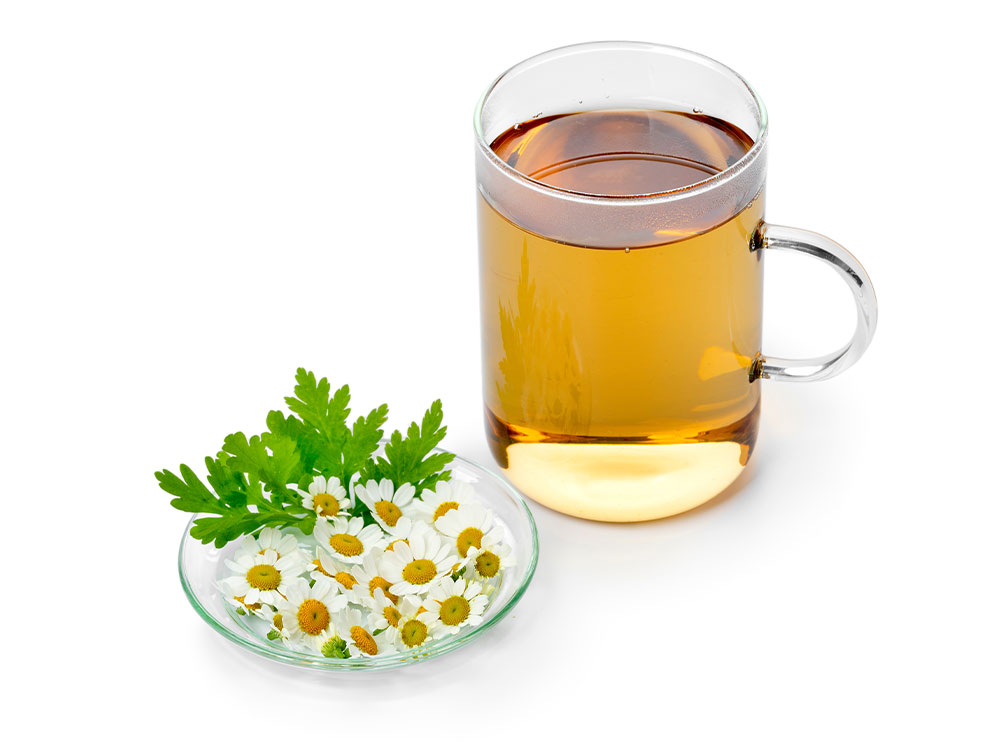
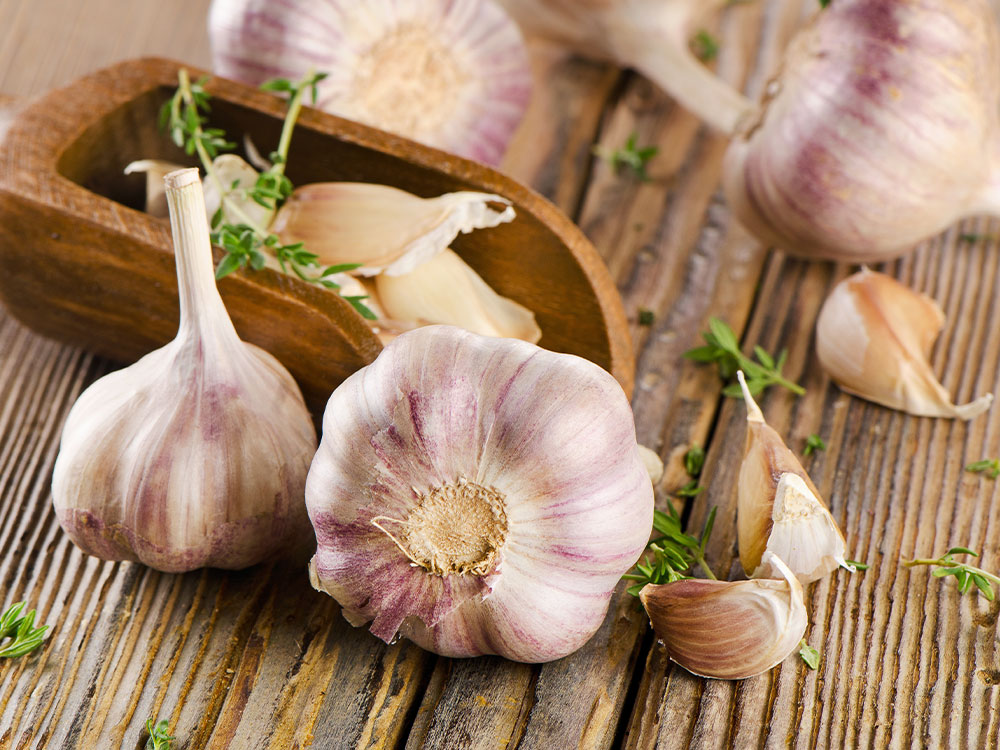
Garlic as cardio protective and anti inflammatory
(Cloves, root)
Garlic has been used all over the world in cooking and for its many medicinal properties. The compounds isolated from garlic have been shown to have antimicrobial, cardio protective, anticancer and anti-inflammatory properties. These properties may play a role in the belief that garlic helps lower cholesterol and blood pressure. Unfortunately, the evidence is conflicting. The FDA considers garlic safe. But it can increase the risk of bleeding and should not be used with warfarin, a blood thinner. For the same reason, large amounts should not be taken before dental procedures or surgery. Figure 34
Ginger in motion sickness
Ginger is most commonly known as an herb for easing nausea and motion sickness. Research suggests that ginger may relieve the nausea caused by pregnancy and chemotherapy. Other areas under investigation in the use of ginger are in surgery and as an anticancer agent. It's wide range of actions may be due in part to its strong anti-inflammatory and anti oxidative effects.
Reported side effects may include bloating, gas, heartburn, and nausea in certain people.

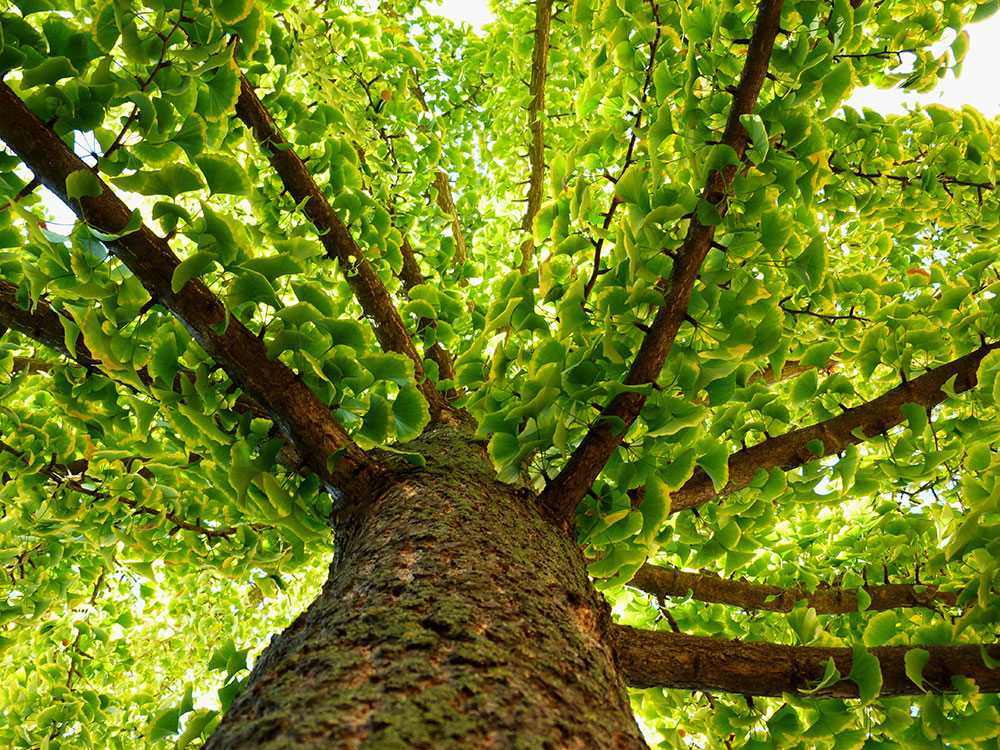
Gingko in asthma and fatigue
(Leaf)
Ginkgo leaf extract has been used to treat a variety of conditions such as asthma, bronchitis, fatigue, and tinnitus. It is also used to improve memory and to prevent dementia and other brain disorders. Some studies have supported its slight effectiveness. But exactly how gingko works isn't understood. Only extract from leaves should be used. Seeds contain ginkgo toxin. This toxin can cause seizures and, in large amounts, death. Because some information suggests that ginkgo can increase the risk of bleeding, it should not be used with nonsteroidal anti-inflammatory medicines, anticoagulants, anticonvulsant medicines, or tricyclic antidepressants. Figure 35
Ginseng as an aphrodisiac
(Root)
Ginseng is used as a tonic and aphrodisiac, even as a cure-all. Research is uncertain how well it works, partly because of the difficulty in defining "vitality" and "quality of life." There is a large variation in the quality of ginseng sold. Side effects are high blood pressure and tachycardia. It's considered safe by the FDA. But it shouldn't be used with warfarin, heparin, nonsteroidal anti-inflammatory medicines, estrogens, corticosteroids, or digoxin. People with diabetes should not use ginseng. Figure 36


Goldenseal to treat diarrhea and skin irritation
(Root, rhizome)
Goldenseal is used to treat diarrhea and eye and skin irritations. It is also used as an antiseptic. It is also an unproven treatment for colds. Goldenseal contains berberine, a plant alkaloid with a long history of medicinal use in both Ayurvedic and Chinese medicine. Studies have shown that goldenseal is effective for diarrhea. But it's not recommended because it can be poisonous in high doses. It can cause skin, mouth, throat, and gastric irritation. Figure 37
Milk thistle to treat high cholesterol (Fruit)
Milk thistle is used to treat liver conditions and high cholesterol, and to reduce the growth of cancer cells. Milk thistle is a plant that originated in the Mediterranean region. It has been used for many different illnesses over the last several thousand years, especially liver problems. Study results are uncertain about the actual benefits of milk thistle for liver disease. Figure 38
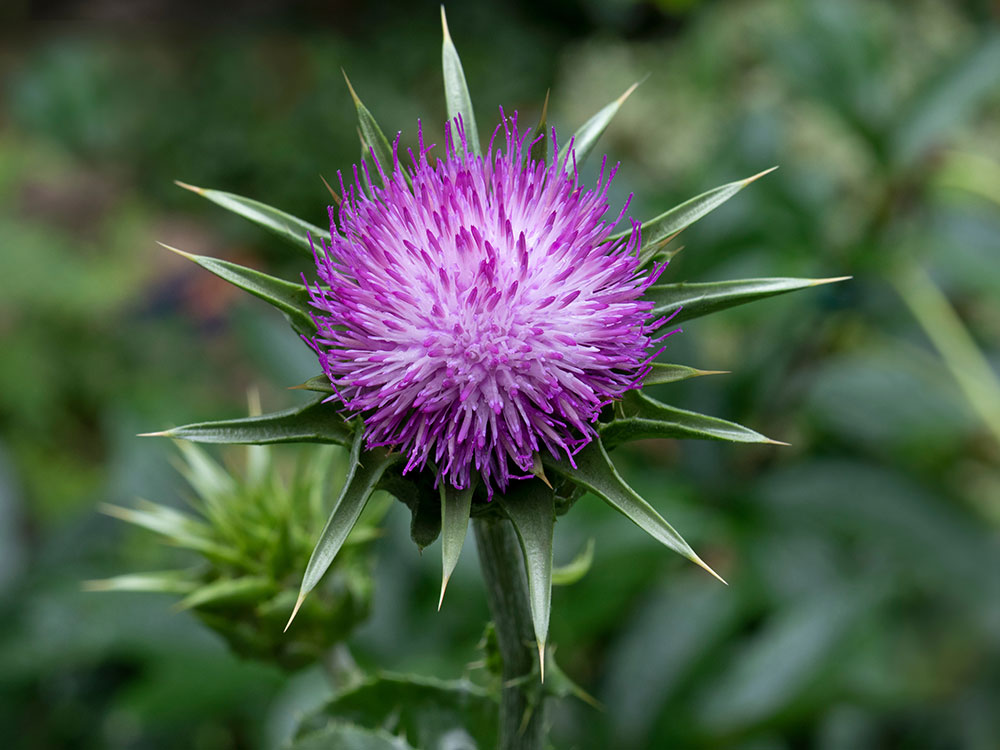
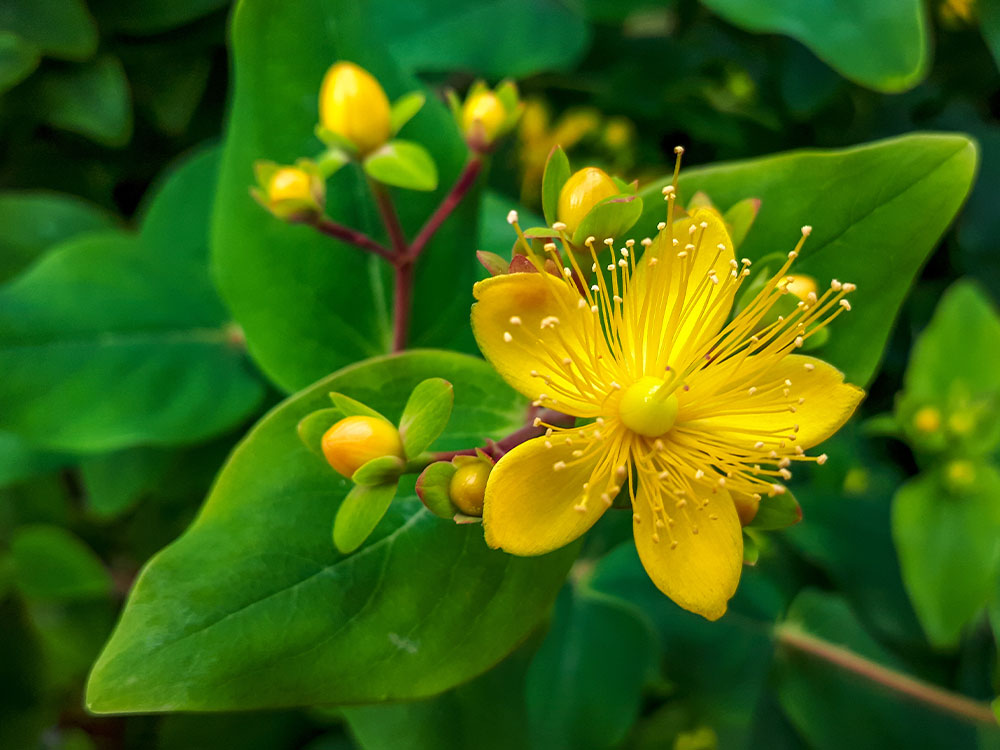
Saint John's wort as anti depressant
(Flower, leaf)
Saint John's wort is used as an antidepressant. Studies have shown that it has a small effect on mild to moderate depression over a period of about 12 weeks. But it is not clear if it is effective for severe depression. A side effect is sensitivity to light, but this is only noted in people taking large doses of the herb. St. John's has been shown to cause dangerous and possibly deadly interactions with commonly used medicines. It is very important to always talk with your healthcare provider before using this herb. Figure 39
Saw palmetto in benign prostatic hypertrophy
(Fruit)
Saw palmetto is used to treat urine symptoms from benign prostatic hypertrophy (BPH). But recent studies have not found it to be effective for this condition. Side effects are digestive upset and headache, both mild. Figure 40

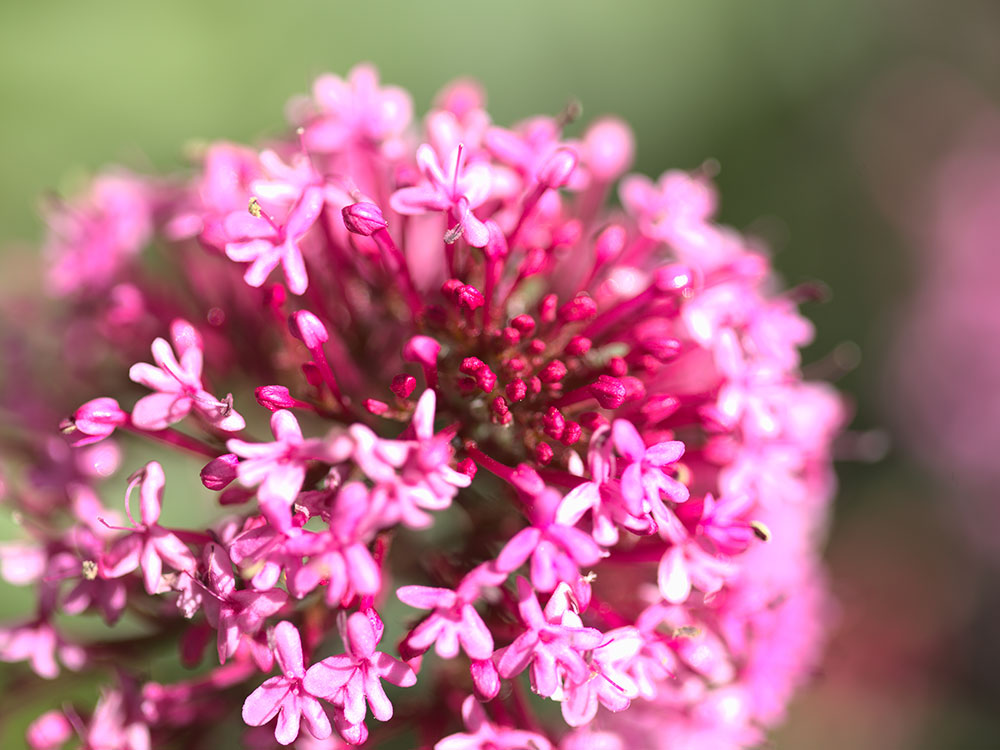
Valerian in anxiety
(Root)
Valerian is used to treat sleeplessness and to reduce anxiety. Research suggests that valerian may be a helpful sleep aid, but the evidence is not consistent to confirm it. In the U.S., valerian is used as a flavoring for root beer and other foods. As with any medicinal herb, always talk with your healthcare provider before taking it. [50] Figure 41
COVID19 and Naturopathy
The system of naturopathy has huge potential to take an individual towards healthy living. In present days’ time people can benefit from these systems in large proportions if sufficient amount of research and development task is promoted in this field of medicine. Especially in the times like today where due to COVID-19 people are largely suffering from the problem of low immunity. These techniques could be highly useful in enhancing the immune system and also improving the overall physical and mental health of the people in the country. Many people have now started opting these drugless systems to cure even the severe diseases like - Diabetes, Asthma, Coronary Artery Disease (CAD), Arthritis, Depression, Anxiety etc. It can be observed that this system of medicine has always been useful for treating diseases in our country. Now in today’s time the integrated methods of naturopathy and modern medical science have open the new doors towards the development of medicine systems which will have the capacity to cure even the most chronic diseases that prevail today. This integration is the sign of a movement towards healthy lifestyle, healthy body as well as a healthy mind that forms the overall wellbeing of the human health and wellness. [51]
Evidence-based medicine (EBM)
Evidence-based medicine (EBM) has been advocated as a new paradigm in orthodox medicine and as a methodology for natural medicines, which are often accused of lacking an adequate scientific basis. This paper presents the voices of tradition-sensitive naturopathic practitioners in response to what they perceive as an ideological assault by EBM advocates on the validity and integrity of natural medicine practice. Those natural medicine practices, which have tradition-based paradigms articulating vitalistic and holistic principles, may have significant problems in relating to the idea of EBM as developed in biomedical contexts. The paper questions the appropriateness of imposing a methodology that appears to minimize or bypass the philosophic and methodological foundations of natural medicine, and that itself seems primarily driven by political considerations. [40]
Evidence-based medicine (EBM) is considered the paradigm in conventional healthcare and has been suggested as the methodology for natural medicine. The underlying foundation of EBM is the randomized controlled trial, which is very valuable in evaluating single treatments for individual diseases. There are randomized controlled trials that suggest that naturopathic treatments, such as botanical medicine, nutritional therapies, acupuncture, and physiotherapy are effective at treating some conditions, such as fibromyalgia, migraine headaches, depression, asthma, hypertension, and type II diabetes.
Some scientists have suggested that an evidence-based approach should include not only research evidence, but also clinic expertise and patient preferences. For example, riboflavin, a B vitamin, has been proven in a randomized controlled trial to reduce the frequency and duration of migraine headaches when used for three months. Thus, a naturopathic physician will often use riboflavin as part of a treatment plan, while also including other treatments based on clinical expertise. These treatments may include the use of omega-3 fatty acids to decrease inflammation or an elimination diet to identify possible food or chemical triggers. Individual patients will have different triggers-for some it could be MSG, for others it could be wheat. Noting individual responses is part of taking patient preferences into consideration. [39]
Evidence-based medicine (EBM)Risk factors of Naturopathy
A few naturopathic treatments have known side effects and risks:
Supplements (vitamin and herbal):
Some of these may interfere with prescription medications. In large doses, certain vitamins may raise your risk of a disease like cancer.
Spinal adjustments:
As part of naturopathic manipulative treatment, your practitioner may apply pressure to your spine. This can damage arteries, nerves, bones, and spinal discs. In rare cases, it may lead to a stroke.
Detox diets:
These treatments are meant to rid your body of toxins. They involve cutting out certain foods or fasting. That means going for periods without eating. This can be dangerous for people with some chronic conditions, like diabetes. If you’re on the diet for a long time, you run the risk of not getting enough vital nutrients.[52]
Course and License of Practice
They study all the basic medical coursework a medical doctor (MD) would study, plus the more “natural” sciences including nutrition, botanical medicine (herbals), and mental health studies like psychology or counseling. Figure 42
In addition to a standard medical curriculum, schools require their graduates to complete four years of training in disciplines such as clinical nutrition, acupuncture, homeopathic medicine, botanical medicine, physical medicine, IV nutritional therapies, and counseling. [6]
NDs have their own licensing exams, which they can take upon graduating from a four-year accredited institution. They may choose to train and take regular medical board certification exams to become licensed as general practice (primary care) doctors, but this is not common. Their practices are usually integrative, meaning they offer conventional medical advice as well as CAM.
Naturopathic doctors are not licensed in every state or province in the United States and Canada. As of 2019, there are 22 states plus Washington D.C., Puerto Rico, and the U.S. Virgin Islands where you can find a licensed ND. In Canada, citizens may find an ND in Alberta, British Columbia, Manitoba, Ontario, and Saskatchewan. [7]

Naturopath Practitioners
Naturopath practitioners can generally be categorized into three groups: 1) those with a government issued license; 2) those who practice outside of an official status ("traditional naturopaths"); 3) those who are primarily another kind of health professional who also practices naturopathy.[53][54]
In Switzerland, these divisions fall between those with a federal diploma, those recognized by health insurances, and those with neither federal diploma nor recognition by health insurances. Naturopaths with federal diploma can be divided into four categories: European traditional medicine, Chinese traditional medicine, ayurvedic medicine and homeopathy.[55][56] The number of listed naturopaths (including traditional healers) in Switzerland rose from 223 in 1970 to 1835 in 2000.[57]
Licensed naturopaths
Licensed naturopaths may be referred to as "naturopathic doctors" or "naturopathic physicians" in 26 US states or territories and 5 Canadian provinces. Licensed naturopaths present themselves as primary care providers. Licensed naturopaths do not receive comparable training to medical doctors in terms of the quality of education or quantity of hours.
In British Columbia, legislation permits licensed naturopaths to use the title "doctor" or "physician". However, section 102 of the bylaw of the College of Naturopathic Physicians of British Columbia (CNPBC), the terms "naturopathic" or "naturopathic medicine" must be included anytime the term doctor or physician is used by a member of the CNPBC.[58][59][60]
Education
Licensed naturopaths must pass the Naturopathic Physicians Licensing Examinations (NPLEX) administered by the North American Board of Naturopathic Examiners (NABNE) after graduating from a program accredited by the Council on Naturopathic Medical Education (CNME). Training in CNME-accredited programs includes basic medical diagnostics and procedures such as rudimentary physical exams and common blood tests, in addition to pseudoscientific modalities, such as homeopathy, acupuncture, and energy modalities.[60] These accredited programs have been criticized for misrepresenting their medical rigor and teaching subjects that are antithetical to the best understandings of science and medicine.[61][62]. The CNME as an accrediting authority has been characterized as unreliable and suffering from conflicts of interest.[64] The naturopathic licensing exam has been called a mystery by those outside the naturopathic profession and criticized for testing on homeopathic remedies, including for the use to treat pediatric emergencies.
Naturopathic doctors are not eligible for medical residencies, which are available exclusively for medical doctors and doctors of osteopathic medicine. There are limited post-graduate "residency" positions available to naturopathic doctors offered through naturopathic schools and naturopathic clinics approved by the CNME.[63] Most naturopathic doctors do not complete such a residency, and naturopathic doctors are not mandated to complete one for licensure, except in the states of Utah and Connecticut. Continuing education in naturopathic modalities for health care professionals varies greatly. [65][66]

References Naturopathy
- https://www.medicalnewstoday.com/
- https://www.webmd.com/
- https://www.schoolofhealth.com/
- Annals of Ayurvedic Medicine Vol-1 Issue-4 Oct-Dec 2012
- Jarvis WT (January 30, 2001) [copyright 1997]. "NCAHF Fact Sheet on Naturopathy". National Council against Health Fraud. Archived from the original on September 27, 2011. Retrieved April 17, 2009.
- ^ "What is Naturopathy?". College of Naturopathic Medicine website. East Grinstead, England. Archived from the original on September 18, 2010. Retrieved September 16, 2015.
- ^ Beard JA (May 3, 2008). "A system of hygienic medicine (1886) and the advantages of wholemeal bread (1889)". BMJ. Views & Reviews: Medical Classics. 336 (7651): 1023. doi:10.1136/bmj.39562.446528.59. PMC 2364871.
- Barrett S (November 26, 2013). "A close looks at naturopathy". Quack Watch. Archived from the original on April 6, 2011. Retrieved March 21, 2015.
- Boughton RJ, Frey B (2005). "Naturopathic Medicine". Gale Encyclopedia of Alternative Medicine (2nd ed.). Gale. Archived from the original on June 24, 2013. Retrieved March 21, 2015.
- Beyer stein BL, Downie S (May 12, 2004). "Naturopathy: A Critical Analysis". Naturo Watch. Quack Watch. Archived from the original on March 7, 2009. Retrieved March 21, 2009.
- Baer HA (September 2001). "The sociopolitical status of U.S. naturopathy at the dawn of the21stcentury". MedicalAnthropologyQuarterly. 15 (3):329346. doi:10.1525/maq.2001.15.3.329. PMID 11693035.
- "Naturopathy: Report of the Australian Committee of Inquiry (1977)". Naturo Watch. Quack Watch. December 25, 2003. Archived from the original on September 6, 2010. Retrieved September 3, 2013. Citing: Webb EC, et al. (1977). Report of the Committee of Inquiry into Chiropractic, Osteopathy, Homoeopathy and Naturopathy. Canberra: Australian Government Publishing Service. ISBN 978-0642922878.
- "Licensed States & Licensing Authorities". American Association of Naturopathic Physicians website. 2009. Archived from the original on November 30, 2009.
- "Washington Administrative Code: Title 284, Chapter 43, Section 205: Every category of health providers". Washington State Legislature. August 28, 1999. Archived from the original on October 11, 2011. Retrieved November 19, 2010. (effective)
- AMA Scope of Practice Data Series: Naturopaths. American Medical Association (Report). 2009. Archived from the original on June 29, 2016. Retrieved July 30, 2016 – via The Alaska State Legislature.
- Thielking M (October 20, 2016). "'Essentially witchcraft:' A former naturopath takes on the field". STAT. Archived from the original on October 25, 2016. Retrieved October 30, 2016.
- ^ Devlin, Hannah (March 27, 2018). "The naturopath whistleblower: 'It is surprisingly easy to sell snake oil'". Guardian. Retrieved August 23, 2021.
- https://societyofnaturopaths.org/
- https://www.healthline.com/
- https://www.epainassist.com/
- Knipschild PK Leijnen J Riet GT., Belief in the effica[1]cy of alternative medicine among general practitioners in the Netherlands, Journal of Social Science Medicine, 1990: 3(1) 625-626.
- Kohli, Manu & Kohli, Gaurav. (2020). Understanding of Naturopathy. International Journal for Nursing Education and Research.2 (2). ISSN-2347-8640. Pg No. 135-139.
- Nair, Pradeep & Nanda, Awantika. (2014). Naturopathic medicine in India. Focus on Alternative and Complementary Therapies. 19. 10.1111/fct.12125.
- Poorman D, Kim L, Mittman P. Naturopathic medical education: Where conventional, complementary, and alternative medicine meet. Complement Health Pract Rev 2002;7(2):99–109.
- Rastogi R, Current approaches of Research in Naturopathy: How far is its evidence base, Journal of Homeopathy Ayurveda Medicine, 2001. (1)107-108.
- Ritenbaugh C, Verhoef M, Fleishman S, et al. Whole systems research: A discipline for studying complementary and alternative medicine. AlternTher Health Med 2003;9(4):32–36.
- Smith MJ, Logan AC. Naturopathy. Med Clin North Am. 2002 Jan;86(1):173-84. doi: 10.1016/s0025- 7125(03)00079-8. PMID: 11795088.
- Boon HS, Cherkin DC, Erro J, Sherman KJ, Milliman B, Booker J, et al. (October 2004). "Practice patterns of naturopathic physicians: results from a random survey of licensed practitioners in two US States". BMC Complementary and Alternative Medicine. 4: 14. doi:10.1186/1472-6882-4-14. PMC 529271. PMID 15496231.
- ^ Jump up to:a b c d Caulfield T, Rachul C (September 2011). "Supported by science?: what canadian naturopaths advertise to the public". Allergy, Asthma, and Clinical Immunology. 7: 14. doi:10.1186/1710-1492-7-14. PMC 3182944. PMID 21920039
- Hough HJ, Dower C, O'Neil EH (September 2001). Profile of a Profession: Naturopathic Practice (PDF). Center for the Health Professions, University of California, San Francisco. p. 54. Archived from the original (PDF) on October 2, 2008.
- ^ Jump up to:a b Young J (2007). "Chapters 8 & 13". Complementary Medicine for Dummies. Chichester, England: Wiley. ISBN 9780470026250. OCLC 174043853.
- ^ Steel A, Foley H, Bradley R, Van De Venter C, Lloyd I, Schloss J, et al. (February 2020). "Overview of international naturopathic practice and patient characteristics: results from a cross-sectional study in 14 countries". BMC Complementary Medicine and Therapies. 20 (1): 59. doi:10.1186/s12906-020-2851-7. PMC 7076821. PMID 32070338
- Standish LJ, Calabrese C, Snider P. The Naturopathic Medical Research Agenda: The future and foundation of naturopathic medical science. J Altern Complement Med 2006;12(3):341–345
- Verhoef MJ, Lewith G, Ritenbaugh C, et al. Complementary and alternative medicine whole systems research: Beyond identification of inadequacies of the RCT. Complement Ther Med 2005;13(3):206–212.
- https://blog.nuhs.edu/
- https://www.lifestylephysicians.com/
- https://nimba.in/5-benefits-naturopathy-drugless-healing-system/
- https://pillarsofwellness.ca/service/naturopathy/
- https://www.takingcharge.csh.umn.edu/naturopathy
- https://www.liebertpub.com/doi/abs/10.1089/acm.2006.12.323
- https://www.balancemed.com.au/digestive-health/
- https://www.atmaneem.com/naturopathy-treatment-for-skin-diseases.html
- https://aanmc.org/featured-articles/naturopathic-approaches-to-improving-fertility/
- House of Lords Select Committee, Science and Technology. 2000, Sixth Report: Complementary and Alternative Medicine, United Kingdom Parliament, London.
- International Centre for Reiki Training. 2005, What is Reiki? , accessed 10 February 2005.
- Australian Osteopathic Association. 2005, What is Osteopathy? , accessed 10 February 2005.
- Expert Committee on Complementary Medicines in the Health System. 2003. Complementary Medicines in the Australian Health System, Commonwealth of Australia, Canberra.
- Robson, T. (Ed). 2003, An Introduction to Complementary Medicine, Allen & Unwin, Sydney.
- Feldenkrais Educational Foundation of North America. 2005, what is Feldenkrais? , accessed 1 March 2005.
- https://www.urmc.rochester.edu/
- Standish LJ, Calabrese C, Snider P. The Naturopathic Medical Research Agenda: The future and foundation of naturopathic medical science. J Altern Complement Med 2006;12(3):341–345.
- https://www.webmd.com/
- "Naturopathy: An Introduction". National Center for Complementary and Integrative Health, National Institutes of Health, United States Department of Health and Human Services. March 2012 [Created April 2007]. Archived from the original on February 23, 2015. Retrieved March 16, 2013.
- ^ Jump up to:a b Iowa Board of Medicine (February 7, 2002). "A Policy Statement on Naturopathy". Iowa Department of Public Health, State of Iowa. Archived from the original on April 12, 2013. Retrieved September 1, 2013.
- "Naturopathe avec diplôme fédéral". CH: State Secretariat for Education, Research and Innovation. Archived from the original on September 4, 2015.
- ^ Jump up to:a b "Legal Status of Traditional Medicine and Complementary/Alternative Medicine: A Worldwide Review". World Health Organization. Archived from the original on July 5, 2015. Retrieved July 4, 2015.
- ^ "Swiss Federal Statistical Office". Switzerland. Archived from the original on July 8, 2015. Retrieved July 11, 2015.
- "Surrey councillor fined, suspended from naturopathy for misusing 'physician' title". February 12, 2020. Archived from the original on January 14, 2021. Retrieved April 14, 2020.
- ^ "Complaint filed against Surrey naturopath-turned-councillor who campaigned as 'physician'". Archived from the original on January 14, 2021. Retrieved April 14, 2020.
- ^ "About Us". North American Board of Naturopathic Examiners. Archived from the original on October 5, 2013. Retrieved September 3, 2013.
- GorskiD (February21, 2011). "Naturopathy and Science". Science Based Medicine.org. Archived from the original on January 14, 2021. Retrieved March 3, 2016.
- ^ Hermes B (March 13, 2015). "ND Confession, Part 1: Clinical training inside and out". Science-Based Medicine. Archived from the original on January 14, 2021. Retrieved July 23, 2016.
- Hermes B (August 29, 2015). "ND Confession, Part II: The Accreditation of Naturopathic "Medical" Education". Science-Based Medicine. Archived from the original on July 10, 2016. Retrieved July 23, 2016.
- ^ Society for Science-Based Medicine (2014). Report to the Maryland Board of Physicians Naturopathic Advisory Committee: Recommendations for Naturopathic Regulation (Report). Archived from the original on January 14, 2021. Retrieved July 23, 2016.
- ^ "Handbook on CNME Postdoctoral Naturopathic Medical Education Sponsor Recognition Process and Standards (2005)" (PDF). Council on Naturopathic Medical Education. Archived from the original (PDF) on June 15, 2006.
- ^ "Application for Licensure: Naturopathic Physician" (PDF). Division of Occupational and Professional Licensing, Utah Department of Commerce. State of Utah. February 17, 2012. p. 1. Archived from the original (PDF) on June 29, 2010. Retrieved September 8, 2013.
